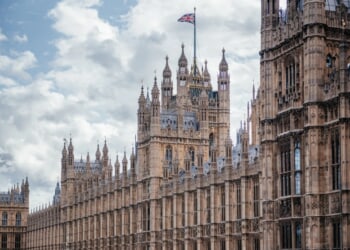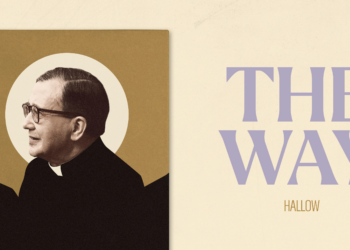Laura Kuenssberg began her interview with the Chancellor of the Exchequer on Sunday with the following words:
“Rachel Reeves you are cutting welfare, you’re cutting spending, you’re cutting regulation…”
No. No. No.
Welfare spending is going up. Public spending is going up. Regulation is going up.
That is the overall picture that the Government is presiding over. Slowing spending increases is not the same as cutting spending. If a few specific cuts for certain items are more than offset by increases elsewhere, then that is not cutting spending overall. (Even when particular cuts are announced it doesn’t mean they will happen in real life – as with the promise Reeves made last year to “stop all non-essential spending” on Government communications.)
“I’m afraid there is no money,” said Liam Byrne, Labour’s departing Chief Secretary to the Treasury, in a famous note in 2010. If only. It was far worse than that. The National Debt had just reached a trillion pounds. The previous year the state borrowed £158 billion. We now have a Labour Government repeatedly claiming it inherited a “£22 billion fiscal black hole.” The figure seems to have been plucked out of the air – though it is routine for any organisation monitoring a budget during a financial year to have a contingency fund which may or may not be enough to withstand unexpected expenses. So under any Government, there will be signals of Departments going over budget and efforts to address such pressures.
The real black hole is much worse. The Labour Government is still digging. On Friday we had an update from the Office for National Statistics. Last month the National Debt reached £2.718 trillion. It is rising fast, even faster than under the previous Government:
“Borrowing in the financial year to February 2025 was £132.2 billion; this was £14.7 billion more than at the same point in the last financial year.”
Contrary to Kuenssberg’s absurd claim of spending being cut it continues to spiral ever higher:
“Central government’s total expenditure was £93.0 billion in February 2025, £3.8 billion more than in February 2024.”
Not that there is anything new about this extraordinary gap between media presentation and financial reality. When George Osborne was Chancellor of the Exchequer public spending barely fell in real terms – from the very high levels in 2009 when Gordon Brown had a spending splurge in response to the financial crash. Yet the howls from the Labour Party and the broadcasters about “austerity” were constant. It was curious how tax rises putting a squeeze on household budgets didn’t seem to count as “austerity” – invariably the term was ony applied to the imagined deprivations in the public sector. Since Osborne left the Treasury, state spending has risen sharply.
Or we could think back to Margaret Thatcher – who was famous for cutting public spending. Except that she didn’t. Her interview with Brian Walden in 1981 was a rare example of when the truth emerged:
Brian Walden: You haven’t actually cut expenditure, have you?
Margaret Thatcher: Point taken. Point taken. No. We haven’t.
What Thatcher did achieve was keeping the growth in public spending below the growth of the economy. A briefing from the Taxpayers Alliance notes that she “achieved the lowest level of public spending as a percentage of GDP in the postwar era, being 34.6 per cent of GDP in 1988-89.” By contrast, “as a percentage of GDP, average spending under Keir Starmer is set to be the second highest of any post war prime minister at 45 per cent. Only Boris Johnson, who presided over the covid-19 pandemic, exceeds this at 45.4 per cent.”
The danger we see from history is that extra public spending is justified on grounds of a temporary emergency – a war or financial crash or pandemic – but a permanent expansion of the state proves the reality. The TPA’s number crunching included the following startling figures:
- Public spending is set to rise to a record high of £1.27 trillion in 2025-26, £23.2 billion more than spending at the peak of the pandemic in 2020-21 and up 20 per cent from pre pandemic levels.
- By 2029-30, public spending per household is set to reach £45,184, up from £43,670 in 2024-25.
- By the end of this parliament, real terms public spending is set to be more than double what it was at the turn of the millennium, £1.32 trillion in 2028-29 compared to £654 billion in 1999-00.
- The current government is forecast to spend a total of £6.43 trillion by the end of this parliament.
One difficulty is that the numbers have got so high as to be incomprehensible. Often journalists get million, billion and trillion mixed up. Covering examples of public sector extravagance at a micro level is more intelligible.
So with the Emergency Budget Spring Statement tomorrow be prepared for the punditry from the alphabet soup of “independent experts” to have little relationship to the real world. Never mind. The public and getting ahead of the pundits in accepting that state profligacy has already reached unacceptable levels and that Labour’s timid proposals will not be anything like enough to deal with it. Before too long the imperative for a radical reduction in the state will be understood as its spending and borrowing prove unsustainable. Then the young thrusters can return from Dubai to rescue the country. Cheer up, things can only get worse.







![‘We All Owe Him (Elon) a Huge Debt of Gratitude’ [WATCH]](https://www.right2024.com/wp-content/uploads/2025/03/‘We-All-Owe-Him-Elon-a-Huge-Debt-of-Gratitude-350x250.jpg)

![Trump's Admin Guts Another ‘Rogue Government Agency with Zero Accountability’ [WATCH]](https://www.right2024.com/wp-content/uploads/2025/03/Trumps-Admin-Guts-Another-‘Rogue-Government-Agency-with-Zero-Accountability-350x250.jpg)







